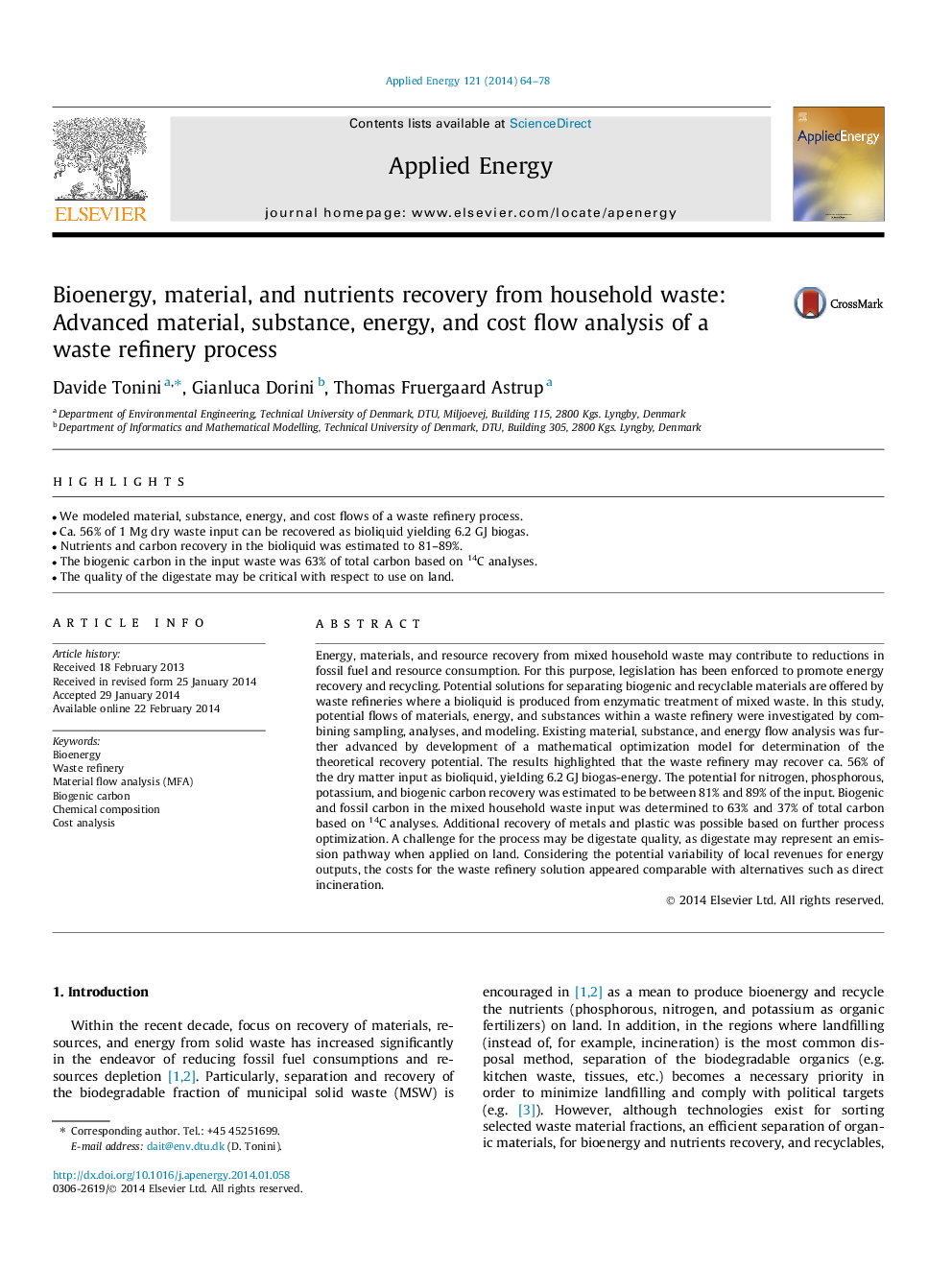| Article ID | Journal | Published Year | Pages | File Type |
|---|---|---|---|---|
| 6690654 | Applied Energy | 2014 | 15 Pages |
Abstract
Energy, materials, and resource recovery from mixed household waste may contribute to reductions in fossil fuel and resource consumption. For this purpose, legislation has been enforced to promote energy recovery and recycling. Potential solutions for separating biogenic and recyclable materials are offered by waste refineries where a bioliquid is produced from enzymatic treatment of mixed waste. In this study, potential flows of materials, energy, and substances within a waste refinery were investigated by combining sampling, analyses, and modeling. Existing material, substance, and energy flow analysis was further advanced by development of a mathematical optimization model for determination of the theoretical recovery potential. The results highlighted that the waste refinery may recover ca. 56% of the dry matter input as bioliquid, yielding 6.2Â GJ biogas-energy. The potential for nitrogen, phosphorous, potassium, and biogenic carbon recovery was estimated to be between 81% and 89% of the input. Biogenic and fossil carbon in the mixed household waste input was determined to 63% and 37% of total carbon based on 14C analyses. Additional recovery of metals and plastic was possible based on further process optimization. A challenge for the process may be digestate quality, as digestate may represent an emission pathway when applied on land. Considering the potential variability of local revenues for energy outputs, the costs for the waste refinery solution appeared comparable with alternatives such as direct incineration.
Related Topics
Physical Sciences and Engineering
Energy
Energy Engineering and Power Technology
Authors
Davide Tonini, Gianluca Dorini, Thomas Fruergaard Astrup,
